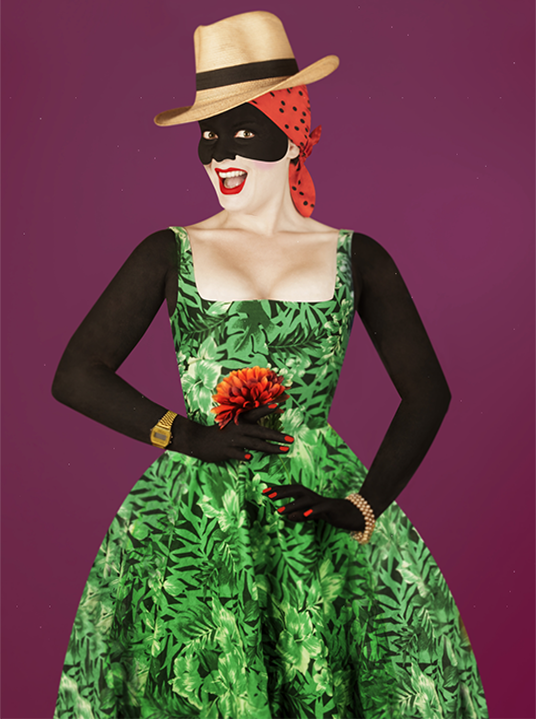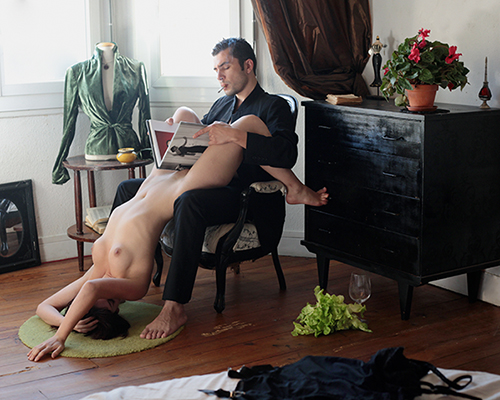Tryptique
47 X 33 inch
By the triptych composition of this work, as much pictorial as photographic, Nathalie De Zan interrogates the regenerative function of the artist. Her self-portrait takes on an iconographic meaning as soon as her “Trinity” is exposed. The avatar manifests the protean nature of the idea of unity. The three panels, arranged from left to right, offer a reading in the traditional sense of writing along with an ancient conception of the creation process. Superimposed on this first reading, is a second modern, Orphic reading: Like Ovid returned from Hell, the Creature finds itself metamorphosed, turning towards its Pygmalion. It is here the creator who is exposing herself, her work returned from among the dead, having found life. The observer is witness to a transformation, a metamorphosis, a modification of form, function, nature, and state.
Like Ovid returned from Hell, the Creature finds itself metamorphosed, turning towards its Pygmalion.
Classicism responds to modernity, creation surprises its creator, Golem is in turn moved by his Dr Frankenstein, then returned to his origin, his model (on the left, completing the Trinity). The model and the creator have, by turns, become monsters. This psychological figure is at the origin of its terrible metamorphosis: a destructive transformation of the Self into something completely “Other” where nothing remains for arbitrating the creative imagination than a fragile carapace, a bare façade.
Translation by Carolyne Lee
Tryptique
Par la composition en triptyque de cette oeuvre, tant picturale que photographique, Nathalie De Zan interroge la fonction régénératrice de l’artiste. Son autoportrait prend un sens iconographique aussitôt que se retrouve exposée sa « Trinité ». L’avatar manifeste la nature protéiforme de cette idée d’unité. Les trois volets disposés de gauche à droite proposent un premier sens de lecture appliqué au sens d’écriture traditionnel occidental, en même temps qu’une conception antique du processus de création. Superposée à cette première lecture, une deuxième, Orphique, contestant la première : telle la Créature se retournant vers son Pygmalion, la création rejoint son créateur, et l’humain rejoint le divin. C’est alors lui qui se retrouve exposé par son oeuvre revenue d’entre les morts, ayant trouvé la vie. L’observateur est témoin d’une transfiguration, une métamorphose, une modification de forme, de fonction, de nature et d’état.
Telle la Créature se retournant vers son Pygmalion, la création rejoint son créateur, et l’humain rejoint le divin.
La création s’étonne de son créateur, le Golem tour à tour s’émeut de son Dr Frankenstein puis, remonté jusqu’à son origine, de son modèle (à gauche, refermant la Trinité). Le modèle et le créateur sont à leur tour devenus monstres. Cette figure psychologique est à l’origine de sa terrible métamorphose : une transformation destructrice du Soi en quelque chose d’absolument « autre » où il ne reste rien, pour abriter l’imagination créatrice, qu’une fragile carapace, à peine une façade.
Texte Xavier Perez
Date:
March 17, 2016







